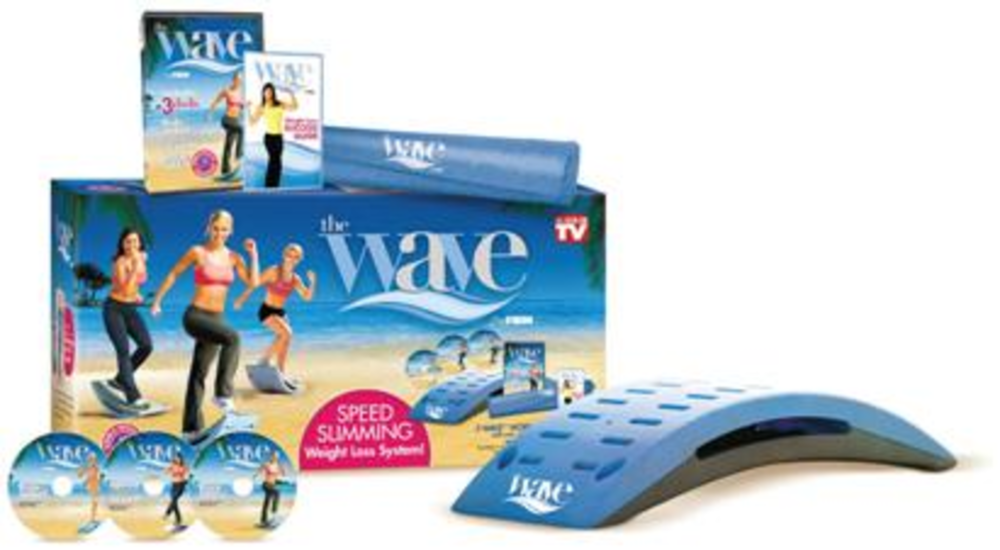If you’ve seen infomercials for the NordicTrack in prime time on A&E, ABC Family, or E; Snuggie blanket spots during an evening slot; or learned about the PedEgg during top viewing hours on CNN, you are witnessing a significant shift in television advertising thanks to the economic downturn. Direct response television ads now appear more and more regularly in prime-time spots.
In today’s environment, many industries are hard-pressed to find sectors that are thriving. But in marketing, with major brands scaling back their traditional advertising dollars, DRTV just might be that sector.
“We’re in a time when, more than ever, ad dollars need to be accountable,” says Rob Medved, president and CEO of Cannella Response Television, which does media buying for products such as the GT Xpress 101, a countertop electric cooker. “We’re in this era of accountability, and that’s direct response.”
Michelle Cardinal, president and founder of R2C Group and CEO of its media division, Cmedia, which heads up the NordicTrack spots, points out that in every downturn there is a silver lining. “What we’re seeing is this major shift in the way people think about television advertising,” she says. “I hate to say it, but it’s kind of exciting.”
Both long-form infomercials and short-form DRTV spots, experts say, have their own unique opportunities. Short-form spots obviously benefit the most from tighter TV ad budgets for big brands. Before the recession, if a DRTV advertiser wanted to run its ad during prime time, it would have to decide far in advance, and pay the same premium rate. But now, the time is not only available, but at a remnant, direct response rate.
“We’re seeing tons of these fire sales — unsold inventory offered up at the last minute — which is perfect for us,” Cardinal says. “We always have budgets and money to spend as long as rates are right.”
Traditional advertisers, she continues, don’t have that luxury. “General marketers spend the money up front and plan their quarters in advance. They’re not typically positioned or situated to pick up deals,” she explains.
There are also opportunities for marketers, in long-form formats such as 30- and 60-minute infomercials. Because the time slots for this type of program are more or less fixed, supply and demand plays a big role in media placement, says Medved: “We’re seeing the relationship of the consumer spending driving the cost of the media down because the demand isn’t as high as it’s been in the past,” he explains.
Cardinal agrees, saying that response levels from long-form DRTV spots dropped going into the fourth quarter of 2008, so those marketers began cutting their budgets. “The long-form world is really responsive to dropping response levels,” she says. “When you cut the [media buying] budget it creates more supply [for networks] and you can negotiate the rates.”
She says this resulted in discounts up to 20%. “That’s huge for the long-form business,” she continues. “This is an industry where the rates continuously go up quarter to quarter.”
In November, Fox made a previously unprecedented move among major networks: It announced a two-hour slot for long-form DRTV marketers on Saturday morning that had been previously occupied by cartoons. Because of a lawsuit with 4Kids, the company that produced the cartoons, the original programming was cut.
Medved says this is a “gold mine” for the DRTV world: “You’re talking about one of the highest volume time periods for paid programming,” he says.
But Cardinal says that type of exposure isn’t for everyone. “The competition for those spots stays among the larger buyers of the media because they have the client base and can handle a large airing,” she says, adding that not all companies could handle the huge call volumes the national spots are likely to generate.
Experts also say certain product categories tend to do better during a recession. Tim Pearson, VP and general manager of direct response for Gaiam, an online retailer of healthy lifestyle products, says the fitness vertical tends to do well because people tend to cancel their gym memberships and personal training sessions in a downturn. Gaiam currently has long-form spots running for the Wave Speed Slimming System and the GT Xpress 101.
“This is when you really see the economy come into play,” Medved says. “A product [like the GT Xpress] solves the meal-on-the-go problem, which is a longstanding one in the housewares vertical. That kind of sell [will] thrive in this environment.”
Cardinal says even higher-priced items can do well if they still seem to give value to the consumer. “We’ve seen a lot of flexible payment plans,” she says of orders for the NordicTrack. “Anything that’s value-driven is definitely going to work.”
Pearson has become more cautious with his company’s buying. “We’re trying to buy smarter and leaner and really manage the minutia of the buys closer, because there’s less room for waste than there was before,” he says.
However, at the end of the day, the experts say the product is still king. “We’re still looking to provide a solution to a unique problem with a unique product that has mass market appeal at a great value,” Medved says.
Though it’s still unclear where the market is headed, Cardinal believes that DRTV media buying rates will go up a bit going into the second quarter. “The business [will stay] strong, because marketers want to see ROI right now,” she says.







